Poco F6 Pro Battery, Display, Speaker, Performance Review
Introduction:
Poco has always made an effort to give its customers excellent value. This also applies to the Poco F6 Pro. It makes sense that it has a slightly higher market and specs aim, given the “Pro” designation. As with the Poco F5 Pro before it, the F6 Pro is actually considered the “flagship” model in the Poco lineup. It does make some compromises to succeed on the value front, such as sticking with the top-tier Qualcomm chip from the previous year rather than the newest one, which keeps it from competing with the “traditional” 2024 batch of flagships. Even so, it is an extremely high-end upper-midrange—some could even say “flagship killer”—with an appealing price tag and very few concessions in terms of use.
As mentioned, the Snapdragon 8 Gen 2 chipset from last year powers the Poco F6 Pro. It may not be the best processor available right now, but it’s still a very strong chip that can easily handle any task.
Xiaomi Poco F6 Pro specs at a glance:
-
The Body and Network:
Network Technology: LTE, 5G, HSPA, and GSM
Released: Released on 2024, May 23
Current status: Available. Released 2024, May 23
Body measurements:160.9 x 75 x 8.2 mm (6.33 x 2.95 x 0.32 in)
Weight: 209 g (7.37 oz)
SIM: Dual SIM (Nano-SIM, dual stand-by)
Durability: IP64, resistant to water and dust -
Platform and Display:
Type of Display: AMOLED, 68B colors, 120Hz, Dolby Vision, HDR10+, 700 nits (typ), 1200 nits (HBM), 4000 nits (peak)
Dimensions: 6.67 inches, 107.4 cm2 (~89.0% screen-to-body ratio)
Resolution: 1440 x 3200 pixels, 20:9 ratio (~526 ppi density)
Protection: Corning Gorilla Glass Victus Platform
Operating System: Android 14, HyperOS
Processor: Qualcomm SM8550-AB Snapdragon 8 Gen 2 (4 nm)
CPU: Octa-core (1×3.2 GHz Cortex-X3 & 2×2.8 GHz Cortex-A715 & 2×2.8 GHz Cortex-A710 & 3×2.0 GHz Cortex-A510)
GPU: Adreno 740 -
Cameras and Memory:
Memory Card Slot: Not Available;
Internal Memory: 256GB 12GB RAM, 512GB 12GB RAM, 1TB 16GB RAM UFS 4.0
Main Camera: 50 MP, f/1.6, (wide), 1/1.55″, 1.0µm, PDAF, OIS
8 MP, f/2.2, (ultrawide)
2 MP, f/2.4, (macro)
Selfie Camera Features: HDR
Selfie Camera Video: 1080p@30/60fps, gyro-EIS
Self-Portrait Camera: 16 MP, (wide)4. Sound and Connectivity:
Sound Loudspeaker: Yes, there is a sound speaker with 3.5mm stereo speakers.
Jack: Not at all
Features for audio: 24-bit/192kHz Hi-Res & Hi-Res wireless audio
Interaction WLAN: Wi-Fi 802.11 a/b/g/n/ac/6/7 (market/region dependent), dual-band, Wi-Fi Direct
Bluetooth : 5.3, A2DP, LE, aptX HD, LHDC
Positioning: GPS (L1+L5), BDS (B1I+B1c+B2a), GALILEO (E1+E5a), QZSS (L1+L5), NavIC (L5), GLONASS
NFC: Yes (market/region dependent)
Infrared Port: Yes
Radio: No
USB: USB Type-C 2.0, OTG5. Functions and Power Source:
Sensor: Fingerprint (under display, optical), accelerometer, proximity, gyro, compass
Battery: 5000 mAh, non-removable
Charging: 120W wired, PD3.0, QC3+, 100% in 19 min (advertised)6. Miscellaneous:
Colors: Black, White
Models: 24069PC21G
Additionally, the Poco F6 Pro specs sheet highlights more than just the chipset. The phone also boasts a 6.67-inch, 120Hz AMOLED screen that is quite good overall. It features a resolution of 3200 x 1440 pixels, 12-bit color depth, 3840Hz PWD dimming, and an amazing 4,000 nits of peak brightness.
The Poco F6 Pro’s camera configuration is also quite good. The primary camera from the previous model has been replaced with a 50MP, larger, brighter unit that once again supports OIS. Along with the primary camera and a 16MP selfie, you also get an 8MP ultrawide and a 2MP macro.
Not to be overlooked are a few other intriguing features of the Poco F6 Pro, like its 120W HyperCharge fast charging capability on its 5,000 mAh battery, which is even more delightful given that the charger comes in a retail box. To mention a few, you also get NFC, dual speakers, and an IR blaster.
Unboxing
The packaging for the F6 Pro is a very typical two-piece cardboard package. In keeping with the brand’s classic color palette, it is entirely black with yellow lettering. Both the box and its internal cradles—including the one that holds the phone—are composed of cardboard. In the wrapping encasing the phone, we only saw one plastic component. Apart than that, great job being environmentally conscious.

The Poco F6 Pro comes with an extremely extensive accessory kit. It comes with a proprietary USB Type-A to Type-C connector and a 120W HyperCharge charger. If you wish to fully charge the phone, you should monitor both. A very good, robust, somewhat thick, opaque black TPU case is also included in the box. To be honest, we were not able to ask for more.
Design, Quality
The Poco F6 Pro’s design isn’t wholly original. Since it’s actually a rebranded Xiaomi Redmi K70, the design is familiar to us. Like every current slab phone, the most intriguing element of the design is the back, so let’s start there.

The reverse side has a quadruple curvature, equal depth, and a smooth, velvety texture. Poco does not specify the type of glass used for the rear, although it is made of some sort of substance. The pattern on the back is our favorite. Poco has done a really fantastic job of mimicking the look of marble with streaks. The Poco X6 Pro is available with matching streaks in black or white. It’s fantastic that the glass back is somewhat smudge-resistant.
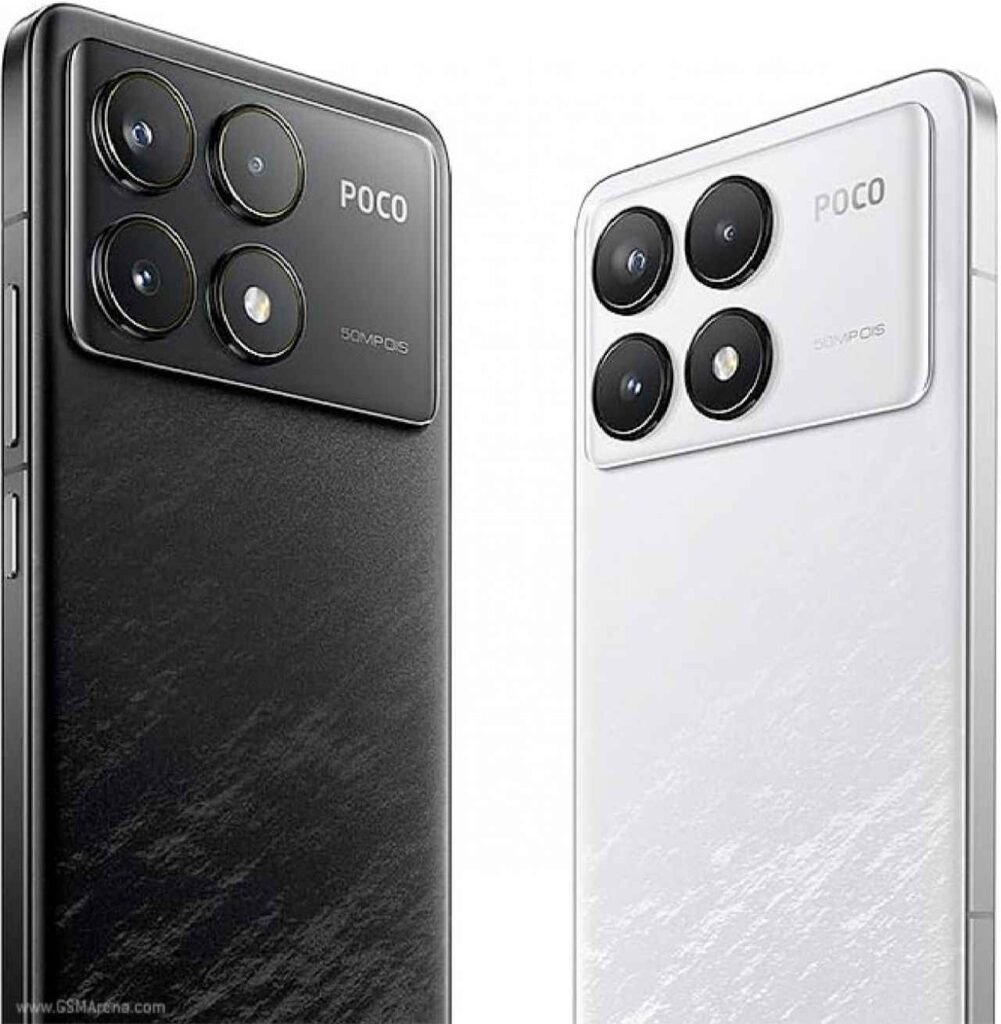
Though it’s not the most inventive design, the extra-wide rectangular camera island does have a certain charm of its own.
The phone’s central frame is composed of aluminum and matches the back in terms of color. It feels and looks really nice with a matte finish. It feels comfy in the hand because to the gently rounded corners.
The F6 Pro’s control panel is somewhat conventional. The power button and volume rocker are located on the right side of the device and are both nicely positioned in terms of height, “clicky,” and tactile feedback. You do not receive a 3.5mm audio jack or a notification LED, in case you were wondering. You do, however, receive an infrared blaster.
The Poco F6 Pro has a quite simple front. Nothing particularly noteworthy to mention exists in this instance. The only thing that breaks the expansive 6.67-inch flat AMOLED display is a somewhat tiny selfie camera punch hole. Not too big, and quite appropriate are the display bezels as well. Every sensor is tucked away and inaccessible from the front.
On board is a fingerprint reader located beneath the display. It’s quick and accurate at the same time. We don’t have any grievances about it. Poco cautions against adding any additional display protection, such as a plastic or glass screen protector, since it may impair the reader’s functionality.
The Poco F6 Pro has an excellent build quality. As we previously stated, the main frame is metal, and the rear is glass with an unknown level of hardness. The body flexes almost nonexistently and lacks hollowness. Gorilla Glass 5 covers the phone’s front, which is a strange choice considering that the standard Poco F6 has Gorilla Glass Victus.
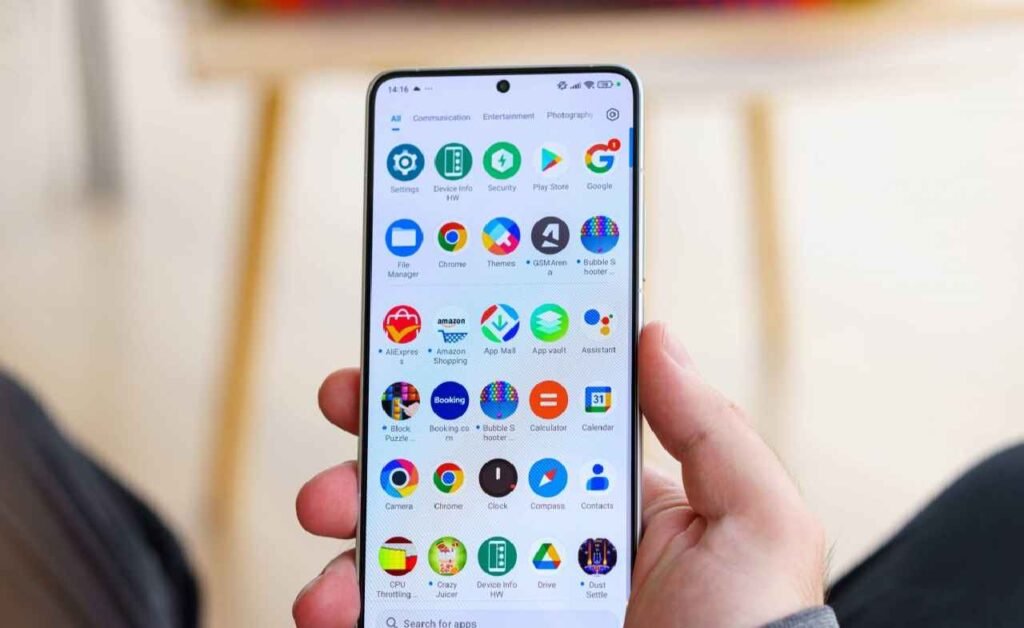
The Poco F6 Pro’s inadequate ingress protection is one regrettable reality. It simply comes with a basic IP54. Considering that the standard Poco F6 gets IP64, that makes it even more strange.
Lab Tests, Display, Battery, Speed, Speaker
Display:
One of the Poco F6 Pro’s obvious attractions is the display. It features a 6.67-inch flat AMOLED screen with 3200 x 1440 pixels of WQHD+ quality. That equals to 526 ppi, which is extremely crisp.

Along with 3840Hz PWM dimming, the Poco F6 Pro also offers 12-bit color depth. According to Poco, the phone will have a usual brightness of roughly 700 nits, a total display brightness of 1,200 nits, and an astounding peak brightness of 4,000 nits. When we fully loaded the slider during our standardized testing, the display only produced about 508 nits. We measured a maximum brightness of 1,203 nits. That is undoubtedly plenty to feel at ease outside.
With the slider’s lowest brightness setting, we were only able to measure 2 nits of brightness at point white.
Additionally, the Poco F6 Pro has a damp Touch display feature that keeps the screen more responsive and functional even in damp conditions.
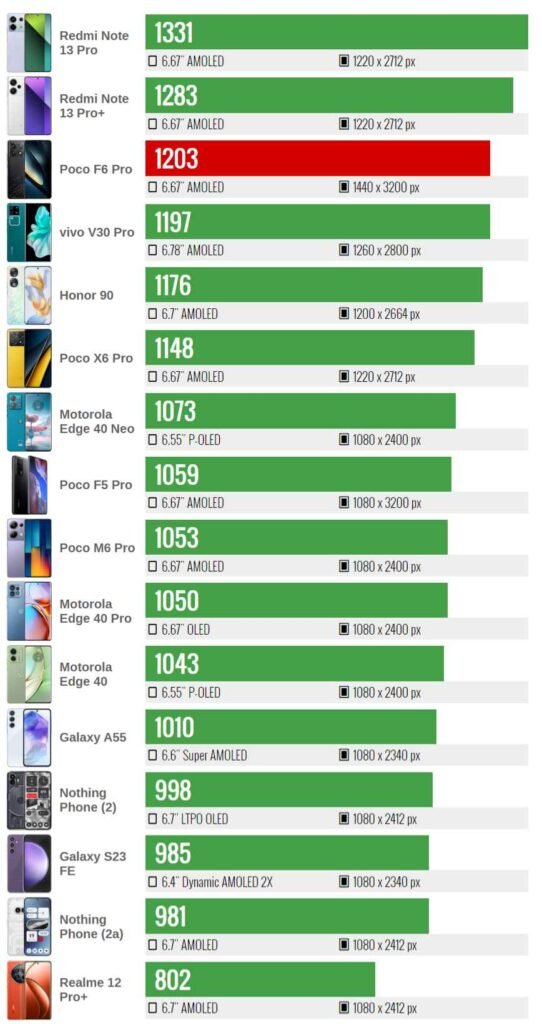
There is a 120Hz refresh rate on the Poco F6 Pro. The phone reports that it can operate in three different refresh rate modes: 60Hz, 90Hz, and 120Hz. The phone has three settings modes to select from in terms of actual settings: 60Hz and 120Hz Custom modes in addition to Auto.
The 60Hz option, as you might expect, locks the refresh rate at 60Hz. Regarding the Auto and 120Hz modes, their automated switching characteristics are extremely comparable. When you engage with the phone or when there is motion on the screen, they update at 120Hz. In order to save power, the refresh rate rapidly reduces to 60Hz once neither is true. The Poco F6 Pro never really used its 90Hz mode. Positively, it appears that the automatic switching logic detects video playback and reduces the refresh rate to 60 Hz.
Battery life
With 5,000 mAh, the Poco F6 Pro boasts a sizable battery. After conducting our routine battery of tests, we discovered that the phone performs decently—not particularly well, either. The battery life, with an Active Use Score of 10:29 hours, might be improved. Gaming and web browsing seem to be very demanding.

Charging speed
Xiaomi HyperCharge, 120W, is supported by the Poco F6 Pro. Together with the phone, there is a 120W charger and a suitable 6A-rated cable included.
The 120W GaN charger that comes with the Poco F6 Pro is a fantastic combination. Five minutes was all it took to get 31% of the charge, and fifteen minutes to restore 64% of the battery. Even while a complete charge takes longer than the 19 minutes that are claimed, it still happens rather quickly—27 minutes.

Speakers
There are two speakers installed on the Poco F6 Pro. It is a hybrid type, where the amplified earpiece controls one channel.
After undergoing our testing, the speaker system demonstrated a respectable -24.8 LUFS loudness score. That is around the same loudness as the standard Poco F5, and it is louder than the Poco F5 Pro predecessor. We also enjoy the sound of the F6 Pro. It features good, generally not overly distorted highs, well-defined and clean mids, and even some bottom. The sound stage has a lot of depth.

Connectivity
There are two SIM slots on the Poco F6 Pro. It can support both SA and NSA Sub-6 5G connectivity simultaneously thanks to its two Nano-Sim ports. NavIC (L5), BDS (B1I+B1c+B2a), GALILEO (E1+E5a), GPS (L1+L5), GLONASS (G1), and QZSS (L1+L5) are the phone’s location-aiding systems. Seeing support for the L5 GPS band is fantastic. Local connectivity is handled by Wi-Fi 6e’s triple band. It is true that this device supports 6GHz frequencies. Additionally, to guarantee the highest possible coverage, the antenna positioning has been improved. Version 5.3 of Bluetooth supports LE. NFC is supportive, however it depends on the market, so speak with your shop. Both an FM radio receiver and a 3.5mm audio jack are absent.
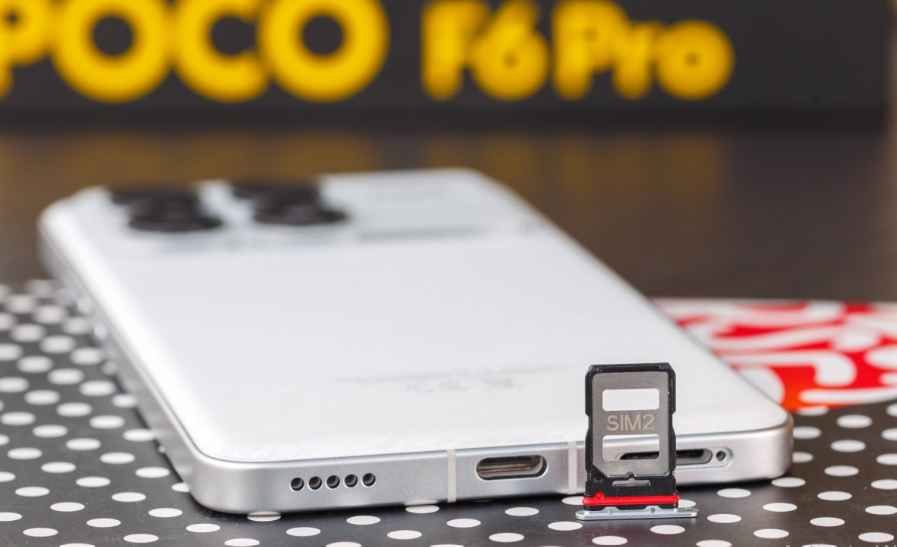
The Poco F6 Pro’s Type-C port is supported by a standard USB 2.0 data connection, with a maximum transmission rate of 480 Mbps possible. There is compatibility for USB Host/OTG, but no other fancy features like video output.
The integrated sensor set of the Poco F6 Pro is really good. The Xiaomi TCS3720ALSPRX ambient light sensor, the QST qmc630x magnetometer and compass combo, the STMicto lsm6dsv accelerometer and gyroscope combo, and the Xiaomi hardware proximity sensor are all present. The barometer is absent from the ship.
Software, Performance
Xiaomi’s relatively new HyperOS, which they describe as “a human-centric operating system designed for the “Human x Car x Home” smart ecosystem,” powers the Poco F6 Pro.
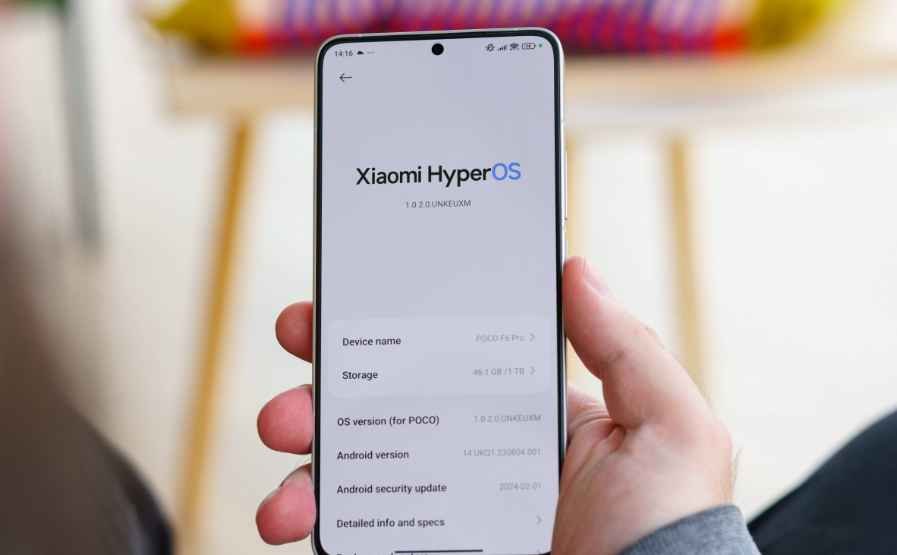
Three years of significant software upgrades and an extra year of security patches are promised for the Poco F6 Pro and F6.
Although we’re sure there are internal enhancements, those who have used Xiaomi phones for a long time will feel right at home with the new OS because it looks and functions a lot like the MIUI of old. Nonetheless, there are several minor variations that may be observed, such as the design’s more flatter shape and many of the parts’ rounded edges.
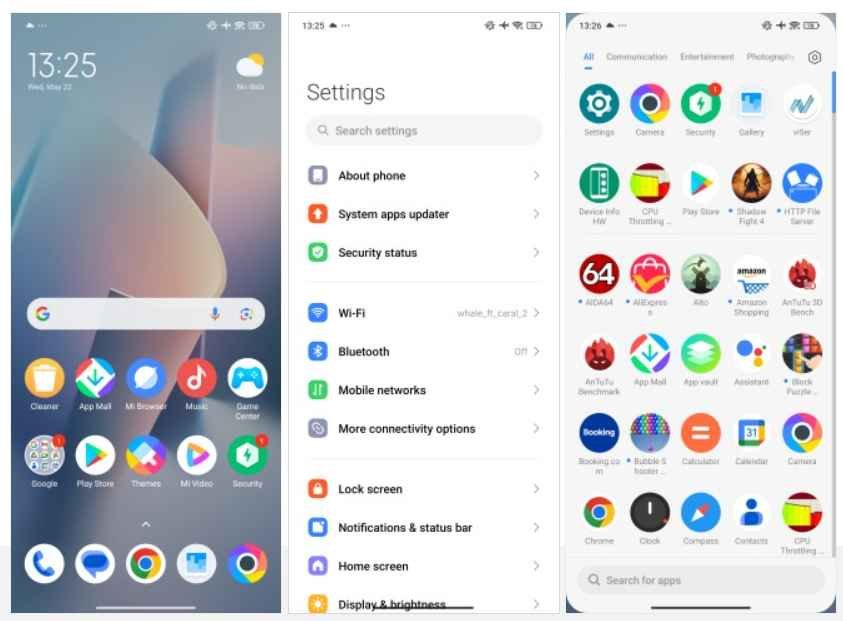
Additionally, the Poco F6 Pro has a lot of AI built in. One of the new AI-powered features is AI Portraits, which employs generative AI to produce remarkably lifelike portraits featuring the face of a subject. AI Expansion can use AI to enlarge images. The purpose of AI Magic Erase Pro is rather obvious: it utilizes AI to erase things from pictures. Additionally, you have AI Album Search to locate relevant images in your photo reel instantly. Additionally, there is Ai Subtitles, which can transcribe your memos into text notes and perform real-time voice translation and video transcription. However, be aware that not all locations or all of these AI features will be available at launch.
Benchmarks, Performance
The Poco F6 Pro is built around the top-tier Qualcomm Snapdragon 8 Gen 2 chipset from the previous year. Choosing last year’s flagship processor is a really decent approach to give high-end performance and features while saving a little money, even though it might not be the newest and greatest. One prime ARM Cortex-X3 core with a maximum clock speed of 3.2 GHz, two Cortex-A715 cores with a maximum frequency speed of 2.8 GHz, two more Cortex-A710 cores with a maximum clock speed of 2.8 GHz, and three Cortex-A510 cores with a maximum clock speed of 2.0 GHz make up the CPU configuration.
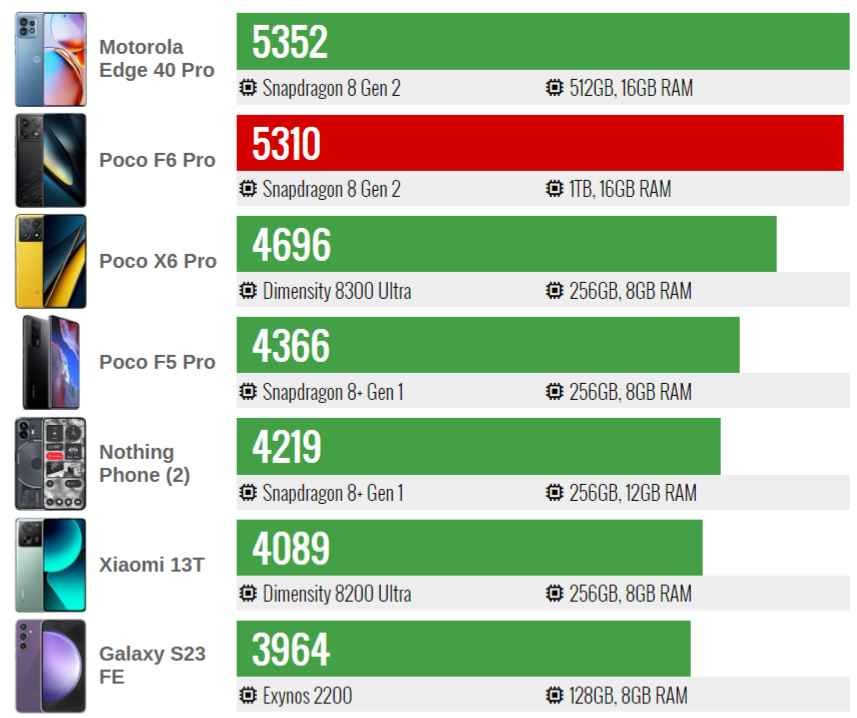
Camera Quality
In theory, the Poco F6 Pro’s camera technology is identical to that of its predecessor. Except for that one instance, Pocos don’t come with telephotos, and the F6 Pro, with its wide primary camera and ultrawide secondary, is in a similarly difficult zoom situation. A simple dedicated macro unit is also included, something the non-Pro model lacks.
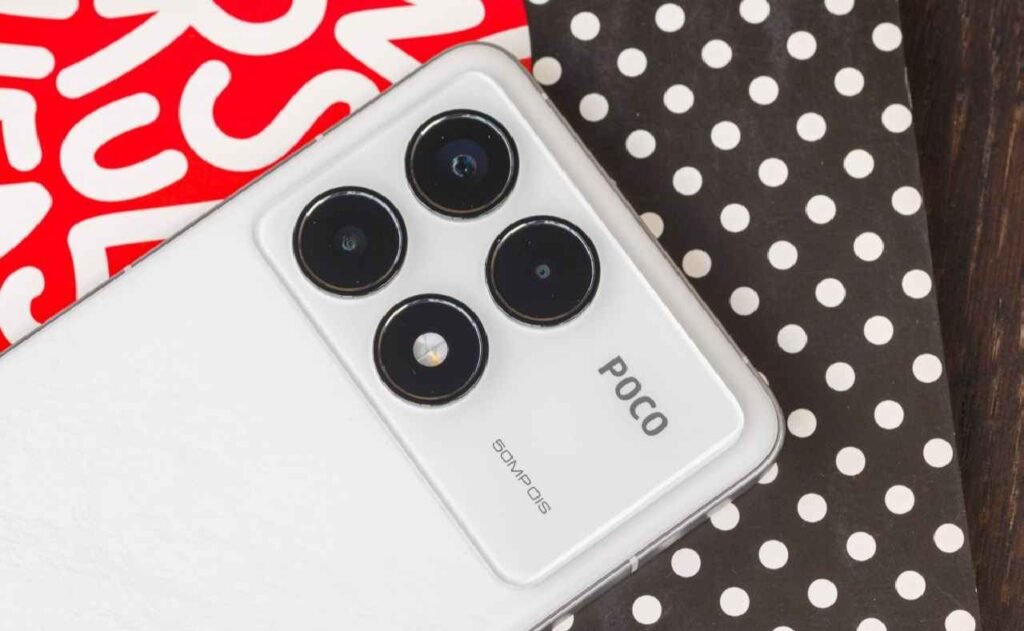
The 50MP main unit of the F6 Pro replaces the 64MP one of the F5 Pro, but before you write it off as a degradation, keep in mind that the new sensor is larger (1/1.55″ as opposed to 1/2.0″). Additionally, the new lens is brighter (f/1.6 vs. f/1.8), which gives the F6 Pro a lot more promise for photography in low light.
However, the F5 Pro we reviewed utilized a different sensor of the same type; the 8MP ultrawide is the same as on the F5. The F6 non-Pro shares this one as well. For what it’s worth (not a lot), the Pro is the only device that has the 2MP macro unit.
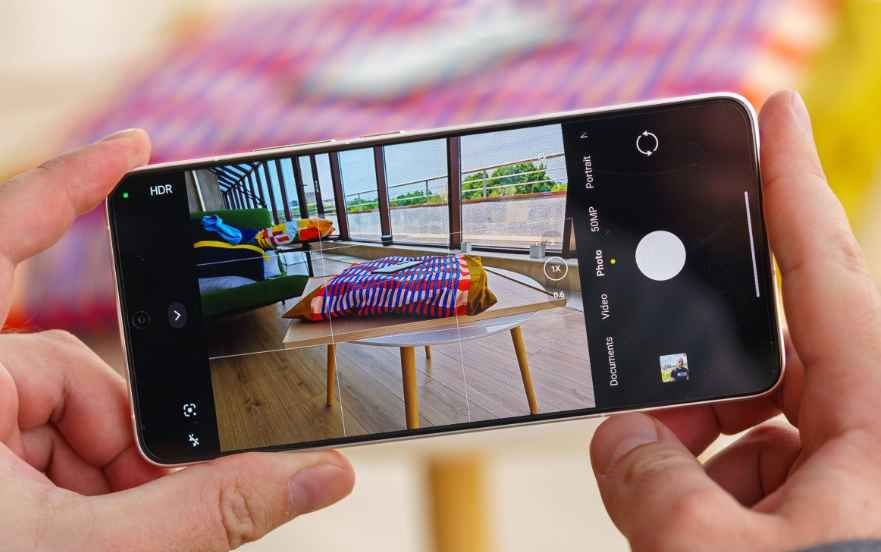
Regarding selfies, the Poco F6 Pro is likewise going in a different direction than the standard F6, sporting a 16MP front-facing camera as opposed to the F6’s 20MP one. They also have different coverage, with the vanilla model using a wider 21mm lens and the Pro here using a more traditionally wide 24mm equivalent lens.
Daylight
The Poco F6 Pro’s primary camera produces some excellent daytime images. The level of detail is superb, with minimal grain in the skies and a reasonably natural rendering of random textures.

We are not disappointed by the broad dynamic range or the trustworthy auto exposure. Additionally, the auto white balance functioned flawlessly. The default out-of-camera results of the F6 Pro may not be exactly to your liking if you like more subdued colors. Saturation is a little on the high side. We do like plenty of pop in our images.

The viewfinder’s 2x zoom button allows you to capture highly useful digital zoom images. Their per-pixel information is generally better than that of the 50MP photos, however they are not quite as crisp.
Ultrawide camera
Because of the ultrawide’s minimal specifications, we would actually consider its results to be pretty good, as they help set a relatively low bar for their performance. Although 8MP isn’t much, the Poco manages to capture some excellent pixel-level detail. The colors are pleasingly brilliant, the dynamic range is very broad, and the white balance is spot on. The camera is somewhat below the main camera, which is generally a good thing.
The only criticism we could think of is that you won’t obtain precise pictures with very close subjects due to the locked focus. However, given the sensor size and lens combination, the depth of field is so great that it doesn’t really matter.

Low-light photo quality
The Poco F6 Pro’s primary camera produces excellent low-light images. Even though the crescent pop-up icon in the viewfinder doesn’t always reflect that it is in Night mode, it automatically engages in some capacity. The outcome is balanced exposures with well-developed shadows and highlights. Though it’s not always the case and when it is, there’s not much of a difference, so we wouldn’t say that the specific Night mode is vital, it could be able to protect highlights a little better. There’s good detail, well-managed noise, and vibrant colors without any desaturation.

Video recording
The primary camera on the F6 Pro offers an extensive selection of video recording modes. While 4K is available in 24fps, 30fps, and 60fps flavors, 8K mode operates at 24 frames per second. The ultrawide has no 60 frames per second option and maxes out at 1080p/30 frames per second. As usual, you have the choice between the more efficient h.265 codec (which is the only option for the 8K mode) or the normal h.264 codec. Stabilization is always on Xiaomis, as is customary.
The 4K video captured by the primary camera is excellent. All three frame rates have bit rates of about 63Mbps, while stereo audio is compressed at a hefty 320kbps. Both 30 and 24 frames per second produce crisp, detailed images; the 60 frames per second mode adds some softness, but not a noticeable decrease in quality. The 8K mode uses 105Mbps of storage capacity, or about 800MB for a minute, and is mostly for show off purposes.
Competition
The base 12GB/256GB Poco F6 Pro costs $499; the 12GB/512GB model costs $549; and the 16GB/1TB model, which is the one we have, costs $629. These prices are the early-bird offer, which will save you $50. That is the official price; the 12GB/256GB base model and the 12GB/512GB model are available on Amazon for €500 and €550, respectively. Although that isn’t a bad deal in terms of money, the Poco F6 Pro is actually rather competitive in the market given the great flagship features you are getting. Let’s explore what more you can buy for the money when we roughly cap our budget at $600.

First up, from Samsung camp, the Galaxy S23 FE has a good depreciation and is well within our means. It is comparable to the Poco F6 Pro in that it is essentially an affordable flagship phone with a few minor concessions here and there. But since its release in October 2023, it has become a little older. Therefore, we advise you to investigate the Galaxy A55 instead. Because it is more of an upper midranger, it is slightly less expensive, but the Poco F6 Pro’s Snapdragon 8 Gen 2 can outperform its Exynos 1480 chipset. Nevertheless, it has some great features, such as stereo speakers, Gorilla Glass Victus+, and IP67 ingress protection.
An outstanding 6.6-inch, 120Hz, HDR10+ Super AMOLED display, and a microSD slot for additional storage. Despite the fact that the A55’s setup isn’t as flexible as the S23 FE’s, it’s still somewhat similar to the Poco. In addition, the Galaxy A55 boasts a larger battery capacity and superior endurance compared to the S23 FE.
There are some intriguing substitutes in Xiaomi’s own lineup as well. There’s the enduringly well-liked Redmi Note 13 series. Based on our statistics, it appears that the Redmi Note 13 Pro is now its most popular member. And you can save a ton of money if you take that approach. You will be stuck with the comparatively mediocre Snapdragon 7s Gen 2 chipset and IP54 ingress protection. Given that the Redmi Note 13 Pro+ has a “full-fat” IP68 rating, 120W fast charging, a MediaTek Dimensity 7200 Ultra, and a strong 200MP main camera, why not spend a little bit more for it?

Pros :
• Solid retail bundle.
• Premium build quality.
• Excellent OLED display with HDR support.
• Fast charging.
• Good stereo speaker setup.
• Snapdragon 8 Gen 2 chipset.
• Great all-around camera performance.
Cons:
• Longer battery life.
• Dating sensor.
• Unimpressive video capture.”









